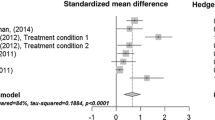Abstract
The purpose of this study was to investigate the impact of imagery interventions on the vocabulary acquisition abilities of second grade students. A total of 15 students were randomly assigned to three different intervention conditions: Word Only, which involves the simple verbal presentation of a vocabulary word; Dual Coding, in which a picture was paired with the vocabulary word, and Image Creation, in which students were told to create a mental picture of the vocabulary word in their mind and draw it on paper. These students were taught a total of 21 vocabulary words: seven animal and habitat words, seven musical instrument terms, and seven science terms. A Latin square design was used, in which each group of students rotated through each of the interventions, being exposed to a different treatment condition for each category of words. Participants were measured on the number of words they were successfully able to acquire through the use of experimenter designed comprehension measures. While no statistical significance was shown between the interventions across the word categories, a significant difference was found between the Image Creation and Word Only interventions within the science terms category. Students also reported that the imagery interventions facilitated the ease with which they learned the words. The findings have implications for increasing the success of classroom instruction, specifically for presenting novel vocabulary words to early elementary learners using imagery methods.




Similar content being viewed by others
References
Aarnoutse, C., & Schellings, G. (2003). Learning reading strategies by triggering reading motivation. Educational Studies, 29, 387–409.
Anderson, R. C., & Kulhavy, R. W. (1972). Imagery and prose learning. Journal of Educational Psychology, 63, 242–243.
Braze, D., Tabor, W., Shankweiler, D. P., & Mencl, W. E. (2007). Speaking up for vocabulary: Reading skill differences in young adults. Journal of Learning Disabilities, 40, 226–243.
Cunningham, A. E., & Stanovich, K. E. (1997). Early reading acquisition and its relation to reading experience and ability 10 years later. Developmental Psychology, 33, 934–945.
Dallas Symphony Orchestra Association (2006). Musical instrument chart. Retrieved from http://www.dsokids.com/listen/instrumentlist.aspx.
Dunn, L. M., & Dunn, L. M. (1997). Peabody picture vocabulary test (3rd ed.). Bloomington, MN: Pearson Assessments.
Edventures (n.d.). Term browser. Retrieved from http://discover.edventures.com/functions/termlib.php.
Eureka. (2001). Animal habitats [Bulletin board set]. Scranton, PA: Paper Magic Group.
Gambrell, L. B. (1983). Induced mental imagery and the written language expression of young children. In J. A. Niles & L. A. Harris Niles (Eds.), Searches for meaning in reading/language processing and construction (32nd yearbook of the National Reading Conference, pp. 251–254). Rochester, NY: National Reading Conference.
Levin, J. R., Davidson, R. E., Wolff, P., & Citron, M. (1973). A comparison of induced imagery and sentence strategies in children’s paired-associate learning. Journal of Educational Psychology, 54, 306–309.
McKee, J., & Ogle, D. (2005). Integrating instruction: Literacy and science. New York: Guilford Press.
Merriam-Webster’s Collegiate Dictionary (1996) (10th ed.). Springfield, MA: Merriam-Webster, Incorporated.
Miller, W. H. (1993). Complete reading disabilities handbook. San Francisco, CA: Wiley.
Paul, P. (1989). Depth of vocabulary knowledge and reading; Implications for hearing impaired and learning disabled students. Academic Therapy, 25, 13–24.
Pearson Education. (2006). Assessments for special education needs. PPVT-III: Peabody picture vocabulary test (3rd ed.). Retrieved from http://ags.pearsonassessments.com/group.asp?nGroupInfoID=a12010.
Pressley, G. M. (1976). Mental imagery helps eight-year-olds remember what they read. Journal of Educational Psychology, 68, 355–359.
Rupley, W. H. (2005). Vocabulary knowledge: Its contribution to reading growth and development. Reading & Writing Quarterly, 21, 203–207.
Sadoski, M. (1998). Mental imagery in reading: A sampler of some significant studies. Retrieved from http://www.readingonline.org/research/Sadoski.html.
Sadoski, M. (2005). A dual coding view of vocabulary learning. Reading & Writing Quarterly, 21, 221–238.
Sadoski, M., Goetz, E. T., & Fritz, J. N. (1993). Impact of concreteness on comprehensibility, interest, and memory for text: Implications for dual coding theory and text design. Journal of Educational Psychology, 85, 291–304.
Sadoski, M., & Paivio, A. (1994). A dual coding view of imagery and verbal processes in reading comprehension. In R. B. Ruddell, M. R. Ruddell, & H. Singer (Eds.), Theoretical models and processes of reading (pp. 582–601). Newark, DE: International Reading Association.
Stahl, S. A., & Fairbanks, M. M. (1986). The effects of vocabulary instruction: A model-based meta-analysis. Review of Educational Research, 56, 72–110.
Author information
Authors and Affiliations
Corresponding author
Rights and permissions
About this article
Cite this article
Cohen, M.T., Johnson, H.L. Improving the Acquisition of Novel Vocabulary Through the Use of Imagery Interventions. Early Childhood Educ J 38, 357–366 (2011). https://doi.org/10.1007/s10643-010-0408-y
Published:
Issue Date:
DOI: https://doi.org/10.1007/s10643-010-0408-y




